
How to Use BME280 Breakout: Examples, Pinouts, and Specs
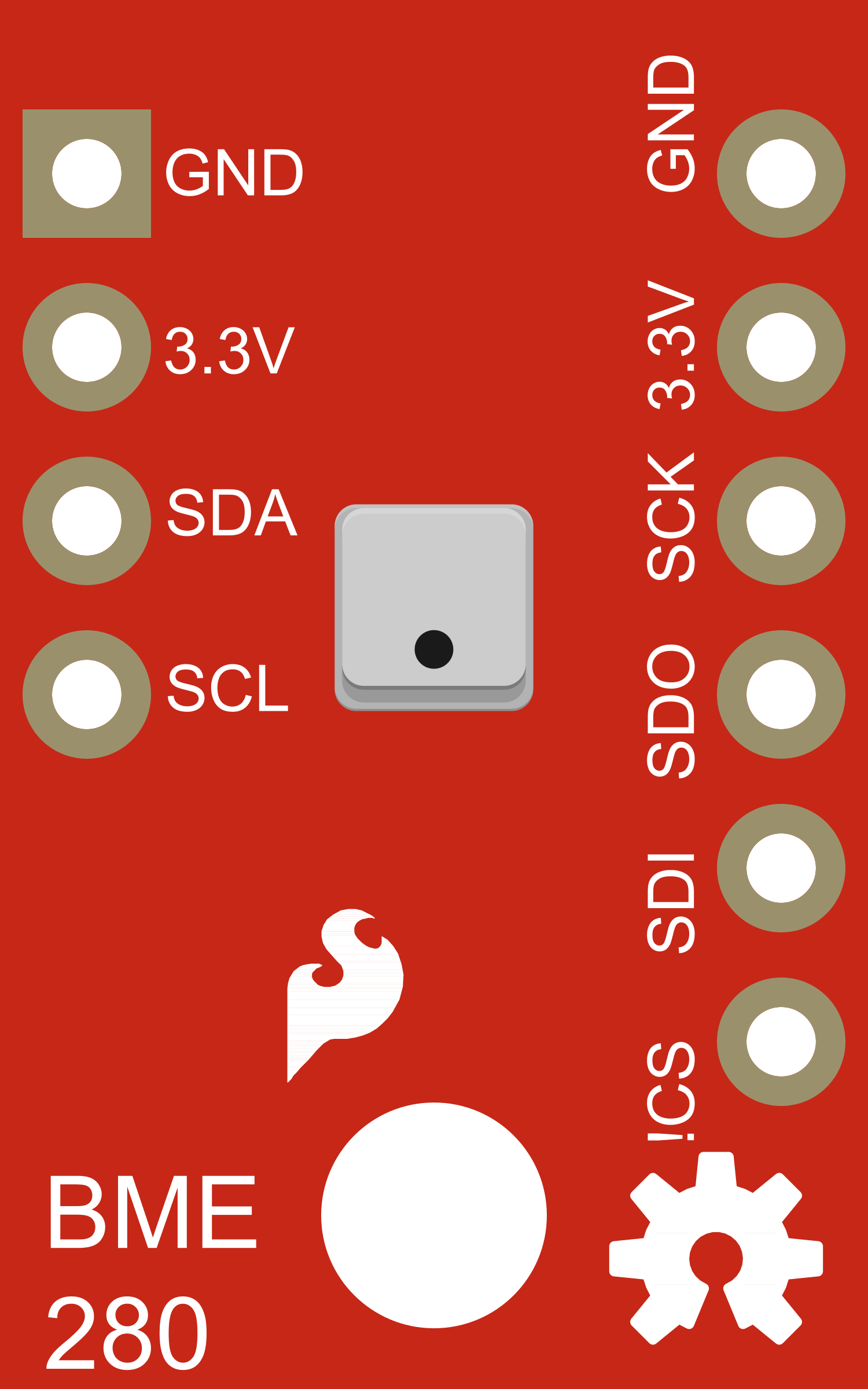
 Design with BME280 Breakout in Cirkit Designer
Design with BME280 Breakout in Cirkit DesignerIntroduction
The BME280 Breakout is a compact and advanced environmental sensor module that provides highly accurate measurements of temperature, humidity, and barometric pressure. This sensor is manufactured by Bosch and is widely used in weather stations, home automation systems, and for indoor climate monitoring due to its precision and low power consumption.
Explore Projects Built with BME280 Breakout
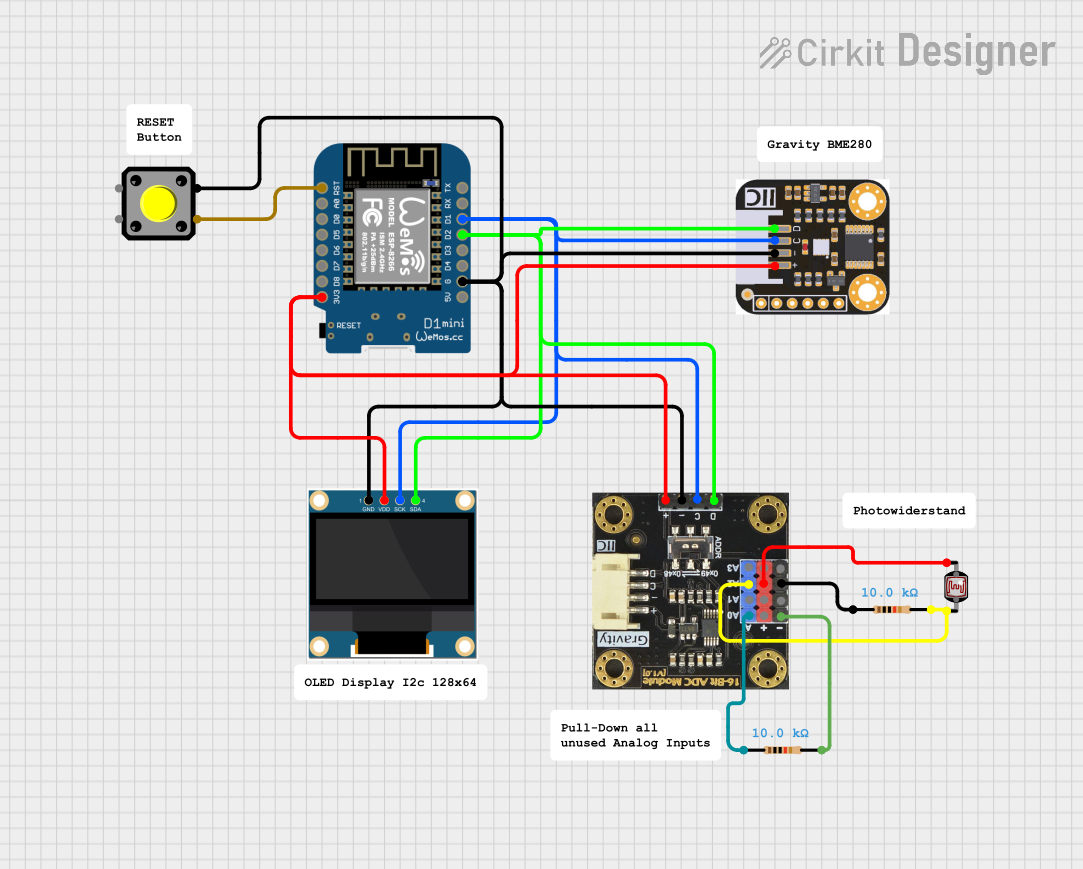
 Open Project in Cirkit Designer
Open Project in Cirkit Designer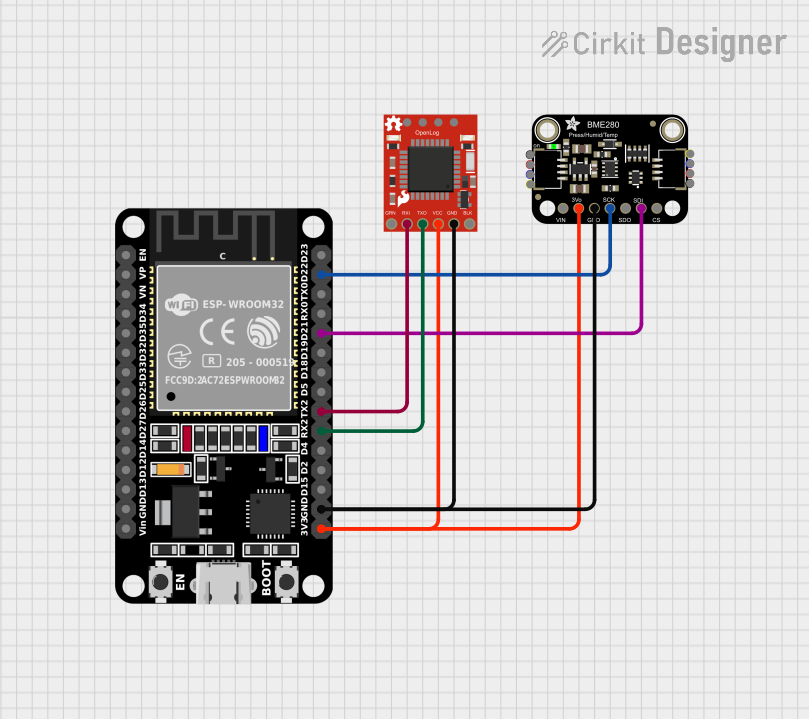
 Open Project in Cirkit Designer
Open Project in Cirkit Designer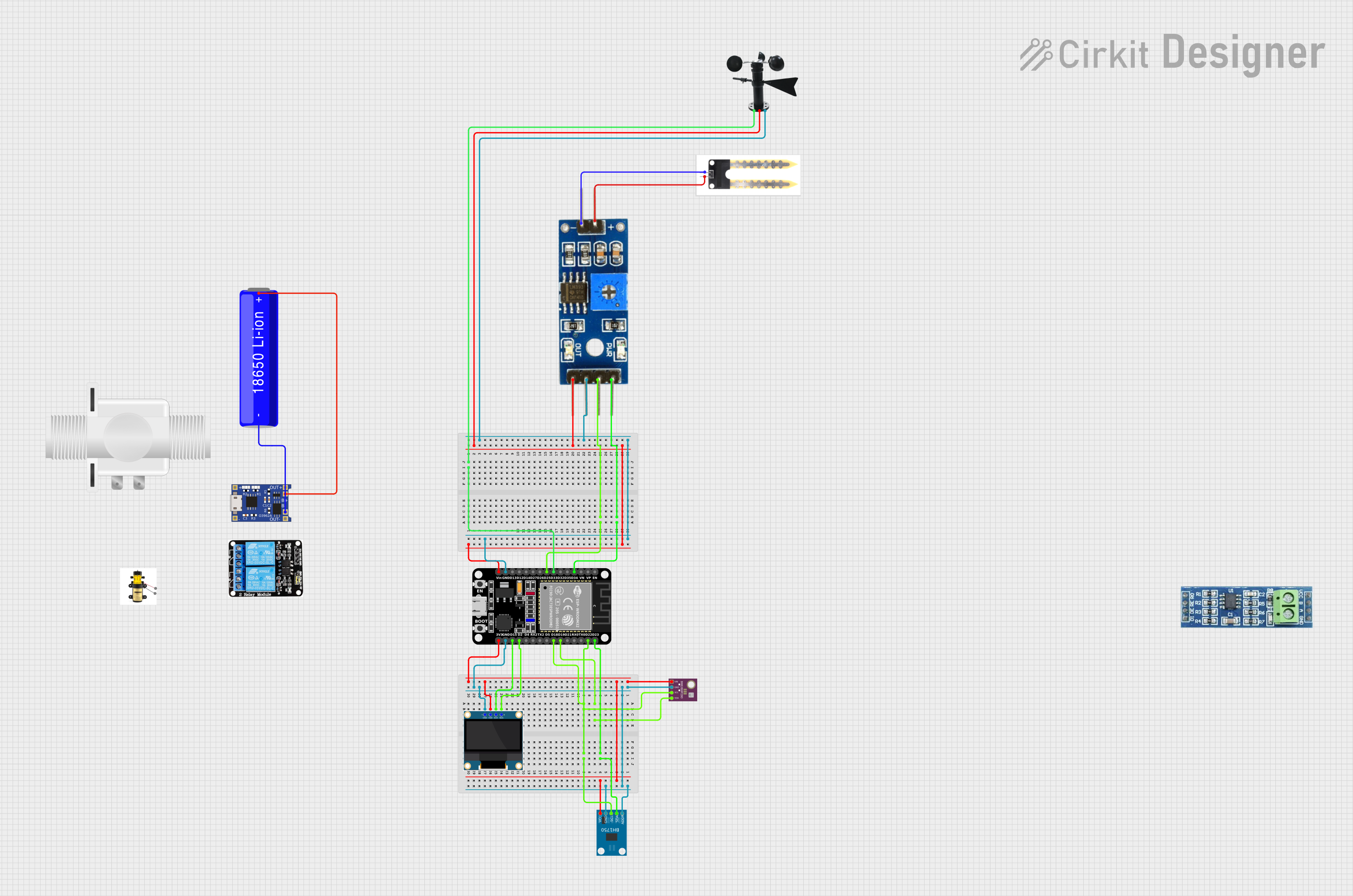
 Open Project in Cirkit Designer
Open Project in Cirkit Designer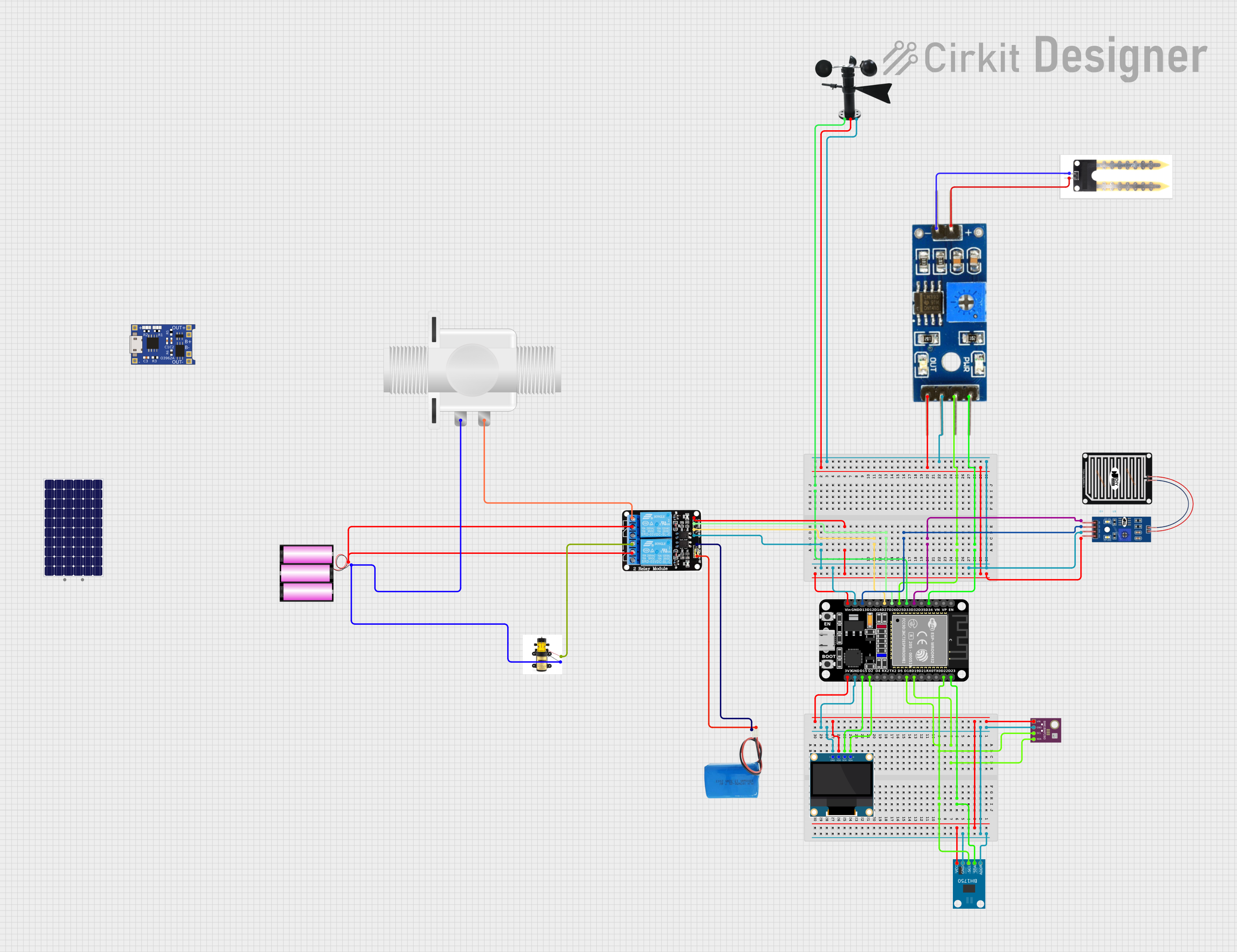
 Open Project in Cirkit Designer
Open Project in Cirkit DesignerExplore Projects Built with BME280 Breakout

 Open Project in Cirkit Designer
Open Project in Cirkit Designer
 Open Project in Cirkit Designer
Open Project in Cirkit Designer
 Open Project in Cirkit Designer
Open Project in Cirkit Designer
 Open Project in Cirkit Designer
Open Project in Cirkit DesignerCommon Applications and Use Cases
- Weather monitoring
- Indoor climate control
- IoT devices for environmental data collection
- Altitude and barometric pressure measurement for drones and mobile devices
- HVAC systems
Technical Specifications
Key Technical Details
- Supply Voltage: 1.71 V to 3.6 V
- Interface: I2C (up to 3.4 MHz), SPI (up to 10 MHz)
- Operating Range:
- Temperature: -40°C to +85°C
- Humidity: 0% to 100% RH
- Pressure: 300 hPa to 1100 hPa
- Accuracy:
- Temperature: ±1.0°C
- Humidity: ±3% RH
- Pressure: ±1 hPa
- Current Consumption: 0.1 µA @ 1 Hz sampling rate
- Response Time:
- Temperature: 1 sec
- Humidity: 1 sec
- Pressure: 1 sec
Pin Configuration and Descriptions
| Pin Number | Name | Description |
|---|---|---|
| 1 | VCC | Power supply (1.71 V to 3.6 V) |
| 2 | GND | Ground connection |
| 3 | SDA | I2C Data line / SPI Data In |
| 4 | SCL | I2C Clock line / SPI Clock |
| 5 | CSB | SPI Chip Select (active low) |
| 6 | SDO | SPI Data Out / I2C Address Select |
Usage Instructions
How to Use the Component in a Circuit
- Powering the Sensor: Connect the VCC pin to a power supply within the specified voltage range and the GND pin to the ground.
- Communication Interface: Choose between I2C or SPI for communication with a microcontroller such as an Arduino UNO.
- For I2C, connect SDA to the microcontroller's SDA pin and SCL to the SCL pin.
- For SPI, connect SDO, SCL, and CSB to the microcontroller's MISO, SCK, and SS pins, respectively.
- Address Selection: The SDO pin can be connected to either VCC or GND to select between two possible I2C addresses (0x76 or 0x77).
Important Considerations and Best Practices
- Ensure that the power supply is stable and within the specified voltage range to prevent damage to the sensor.
- Use pull-up resistors on the I2C lines if they are not already present on the breakout board.
- Keep the sensor away from direct sunlight and heat sources to avoid inaccurate readings.
- For accurate humidity readings, avoid exposing the sensor to contaminants or condensing environments.
Example Code for Arduino UNO
#include <Wire.h>
#include <Adafruit_Sensor.h>
#include <Adafruit_BME280.h>
Adafruit_BME280 bme; // I2C
void setup() {
Serial.begin(9600);
if (!bme.begin(0x76)) { // Change to 0x77 if needed
Serial.println("Could not find a valid BME280 sensor, check wiring!");
while (1);
}
}
void loop() {
Serial.print("Temperature = ");
Serial.print(bme.readTemperature());
Serial.println(" *C");
Serial.print("Humidity = ");
Serial.print(bme.readHumidity());
Serial.println(" %");
Serial.print("Pressure = ");
Serial.print(bme.readPressure() / 100.0F);
Serial.println(" hPa");
delay(2000); // Wait for 2 seconds between measurements
}
Troubleshooting and FAQs
Common Issues Users Might Face
- Inaccurate Readings: Ensure the sensor is not exposed to direct sunlight or heat sources. Check for proper power supply and stable connections.
- No Communication: Verify the correct I2C address is used. Check the wiring and ensure pull-up resistors are in place if needed.
- Sensor Not Detected: Make sure the sensor is correctly powered and the correct communication protocol (I2C/SPI) is selected.
Solutions and Tips for Troubleshooting
- Power Issues: Use a multimeter to check the voltage at the VCC pin to ensure it's within the specified range.
- Connection Issues: Double-check the wiring against the pin configuration table. Ensure solid connections without shorts.
- Code Problems: Verify that the library versions are compatible with your development environment and the example code is correctly uploaded to the microcontroller.
FAQs
Q: Can the BME280 sensor measure altitude? A: Yes, the BME280 can estimate altitude based on the barometric pressure reading.
Q: How do I calibrate the sensor? A: The BME280 comes factory-calibrated. However, for precise applications, you may need to perform additional calibration using known reference values.
Q: Is the BME280 waterproof? A: No, the BME280 is not waterproof. Protect it from moisture and condensation for accurate measurements.